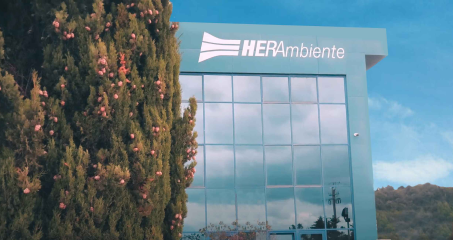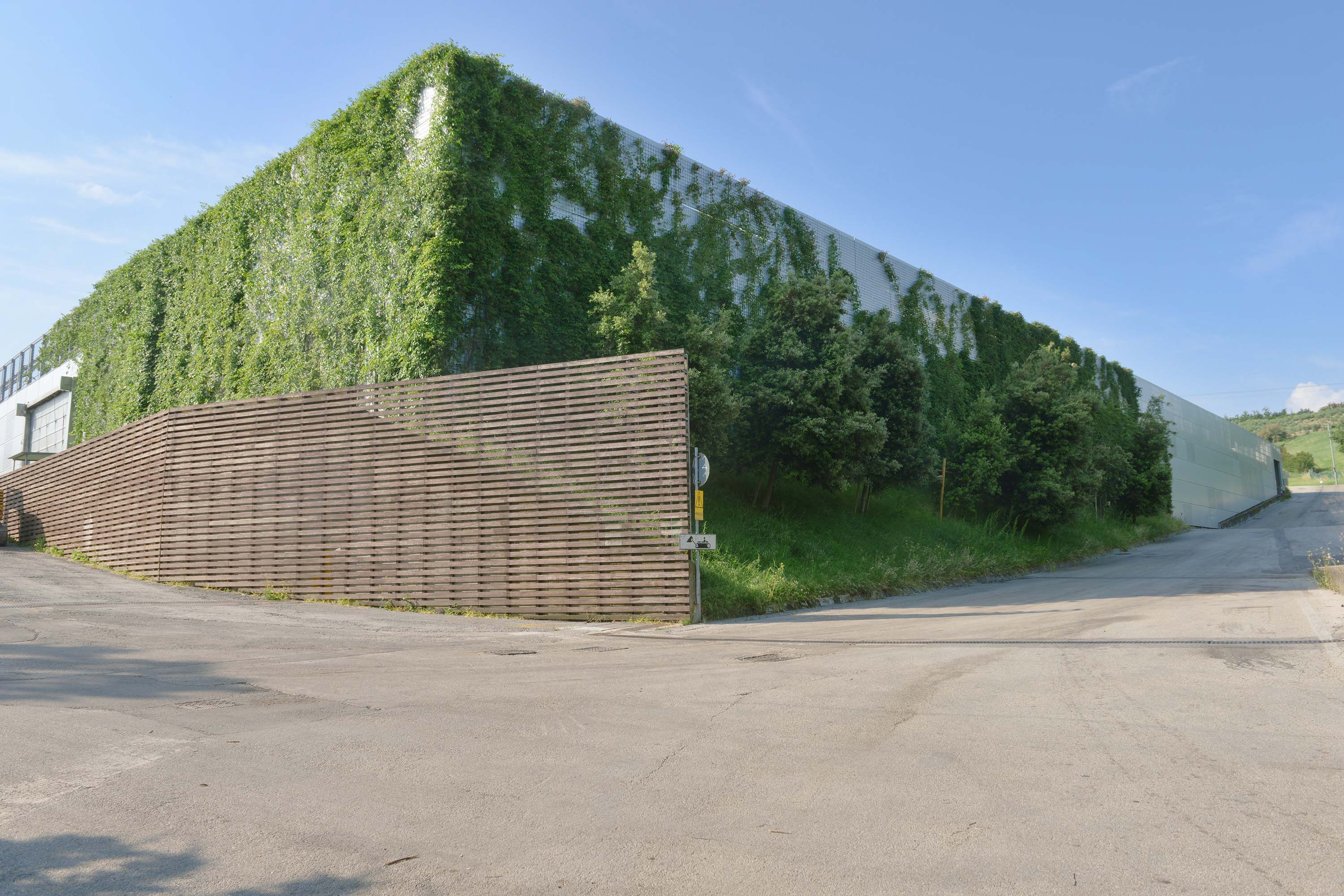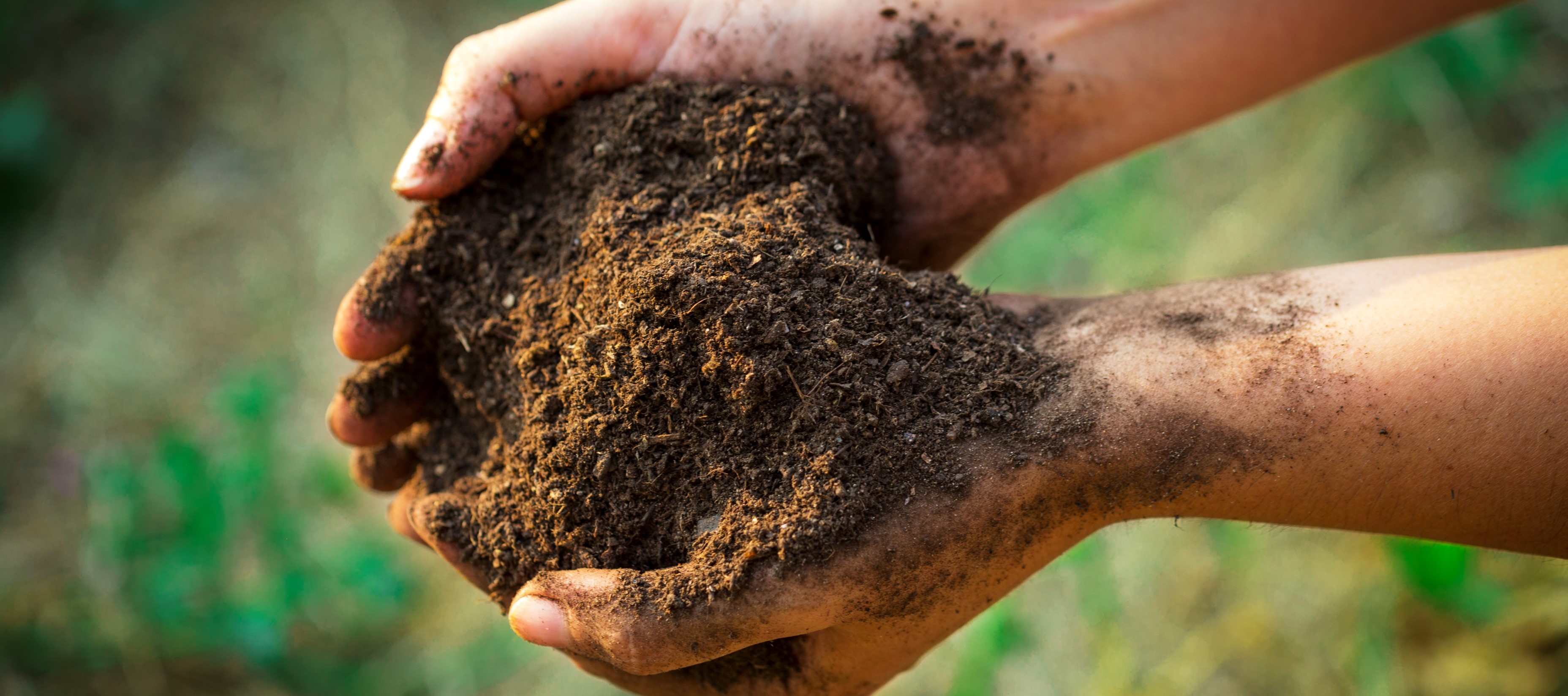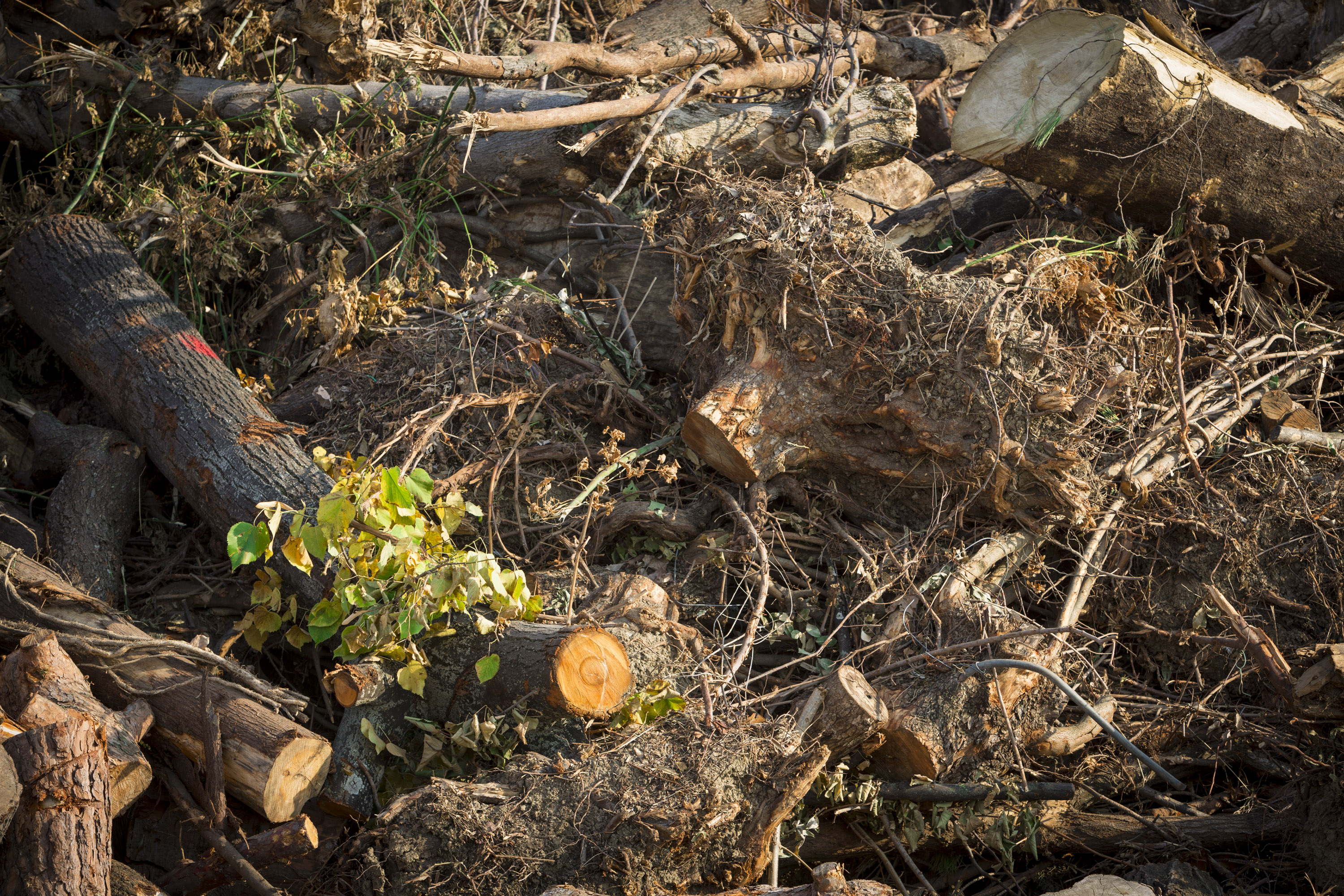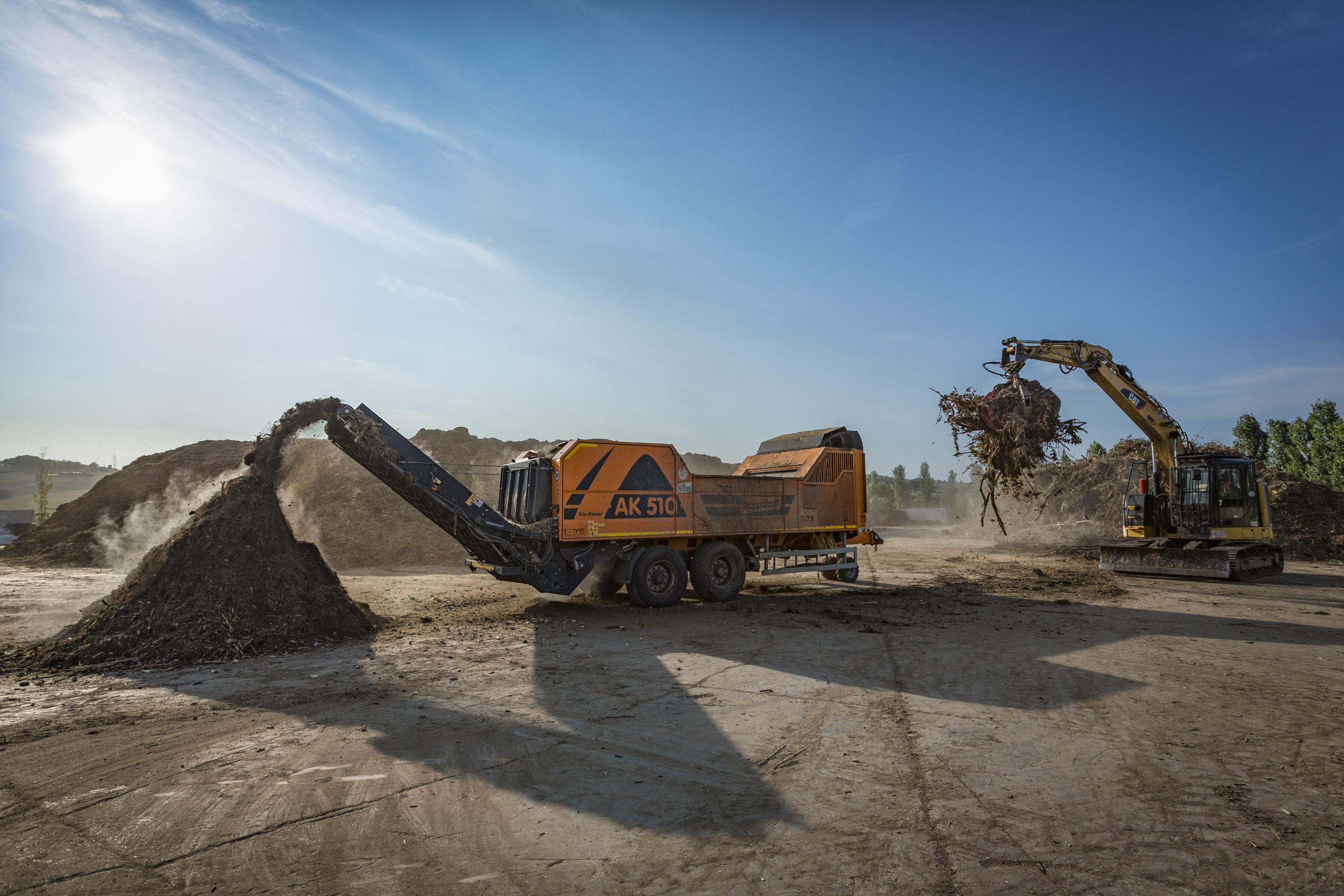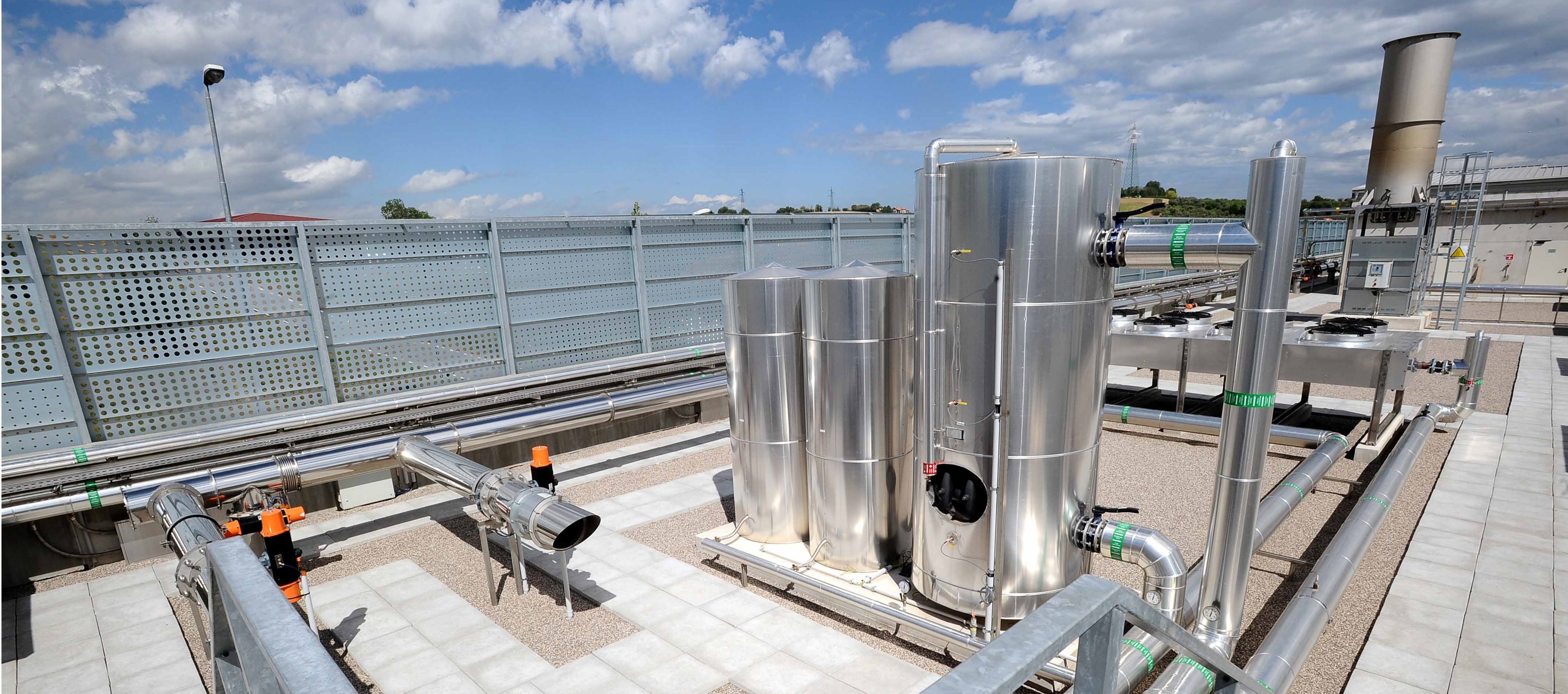Overview
The plant, located at 19, Via S. Martino in venti, Cà Baldacci (Rimini), is dedicated to the storage and recovery of municipal waste and non hazardous special waste through a virtuous anaerobic aerobic type process which, as well as producing high quality compost, also produces energy from renewable sources.
A 176 kWp photovoltaic plant is also installed at the composting plant for the generation of electricity.
Page updated 26 August 2015
Form
-
Treatment capacity
The maximum total quantity of waste accepted for recovery operations is 57,000 tonnes/year, broken down into the following quantities:<br><br> • 45,000 tonnes/year of organic waste<br> • 25,000 tonnes/year of lignocellulosic waste (prunings), without prejudice to the maximum quantity of waste admitted to recovery operations (R3) mentioned above -
Types of waste accepted
The plant treats the following types of organic waste:<br><br> • Slowly decomposable organic waste (primarily green and lignocellulose waste, etc.)<br> • Easily decomposable organic waste (humid organic fraction from separate collection, vegetable waste from agro industrial activities)
- production line for High-quality Compost (or composted mixed soil improver);
- production line for wood biomass.
- section for receiving easily decomposable organic waste in dedicated storage pits;
- section for grinding incoming easily decomposable organic waste;
- section for mixing the ground, easily decomposable organic fraction with digestate extracted from the cell (roughly 50%) and any lignocellulosic fraction (builder). In this section, the cell is opened and the mixture (digestate and builder) is formed; roughly 50% of the extracted digestate is then sent to the aerobic bio-oxidation area, while the remaining part is used as inoculum for subsequent loading of the digester;
- section for anaerobic digestion consisting of 11 cells (digesters). The digestion process lasts 25 days and produces biogas, conveyed to the internal combustion engines generating electricity;
- section for accelerated aerobic stabilisation in which the oxidation process lasts approximately 21 days;
- section for final screening and storage of the compost produced;
- section for treatment of the exhausted air captured from the waste storage and treatment buildings by means of 4 biofilters covering an overall surface of approximately 800 m2.
- section for receiving, storing and grinding lignocellulosic waste;
- section for treatment, possible deferrisation and screening;
- section for drying wood biomass, if applicable, on a dedicated track in the bio-oxidation section of the composting line;
- section for storing the wood biomass produced.
The High-quality Compost production line consists of the following sections and related processes:
The proposed technology is based on a batch type, single-stage dry anaerobic degradation process (not continuous). In this type of process, the anaerobic stages of biological biomass degradation and biogas production (hydrolysis and acidification, acetogenesis and methanogenesis) all occur within the same fermenter. The digestion process takes place under controlled mesophilic conditions and is carried out at a temperature of approximately 37 - 45 °C. The batch plants are operated via a discontinuous process that consists in cyclically loading the inoculated substrate, activating the process for a given time (25 days in this case) and emptying the fermenter. The mixture to be treated is loaded into the digester using a wheel loader.
During the dry anaerobic digestion process, the waste to be treated is not mixed with liquids and the constant humidity of the substrate, needed to execute the digestion process, is ensured by the use of the leachate generated by the process itself, stored in a dedicated tank, and sprayed over the fermenting mass. The proper temperature is guaranteed by using the heat generated by the energy recovery section. This promotes the most favourable conditions for the development and growth of the bacterial strains required for the digestion process. Each single digester consists of a concrete bio-tunnel of appropriate size, closed by a gas-tight hatch. The mixture undergoes the digestion process in a gas-tight environment under anaerobic conditions, with no need for any further mixing. The biogas produced by the anaerobic digestion process is conveyed towards two 499 kWe cogeneration units for the combined generation of electricity and heat. Even though this is a discontinuous process, by exploiting multiple digesters in series that are loaded and emptied at precise intervals, it ensures continuity of the digestion treatment and the constant production of biogas, and thus of both thermal and electrical energy.
In the subsequent aerobic stabilisation stage, the mixture output from the anaerobic digestion section is arranged in piles on aeration tracks. The 21-day oxidative microbiological process starts on these tracks. The aerobic environment is ensured by the addition of oxygen through a forced ventilation system located under the piles. During this fundamental stage, characterised by the bio-oxidation of microorganisms such as bacteria, fungi and actinomycetes, degradation of the waste takes place, with simultaneous production of carbon dioxide, water and heat. Due to the poor thermal conductivity of the biomass, the heat accumulated inside it reaches and exceeds a temperature of 55°C, which guarantees that the material is completely hygienised as the microorganisms harmful to humans and plants disappear. As the enzymatically oxidisable compounds become depleted, microbial activity and heat generation decrease, and a "humified" fraction is obtained, namely compost. Finally, the material taken from the accelerated bio-oxidation section is conveyed to the screening and refining section, where the coarse fractions are separated and the composted mixed soil improver (high-quality compost) used in agriculture is produced. The product is stored in a dedicated area pending its distribution on the market. Wastes and by-products of refining, such as biostabilised material (non-conforming compost), are transferred to suitable authorised facilities for recycling or disposal.
The Wood Biomass production line consists of the following sections:
The wood biomass production line yields the following products: biomass fuel to be transferred to suitable facilities, materials for the production of panels, materials for the production of pellets, materials for mulching, materials for biofilters.
Documents of the facility:
16186Kb - pdf
1480Kb - zip
869Kb - zip
20Kb - docx
Safety documents to access the facility:
254Kb - pdf
453Kb - pdf
116Kb - pdf
152Kb - pdf
20Kb - pdf
359Kb - pdf

